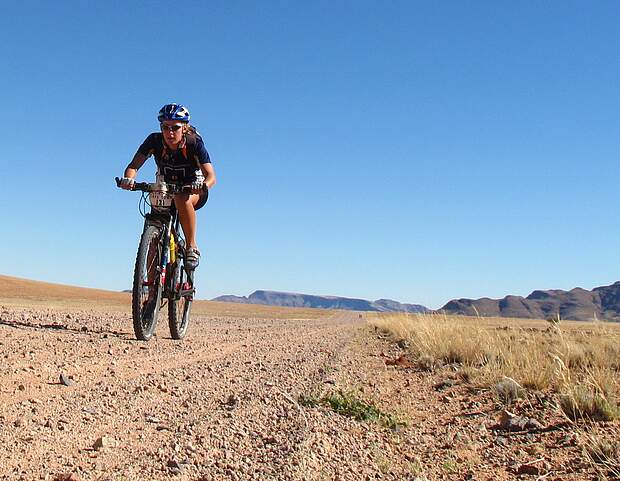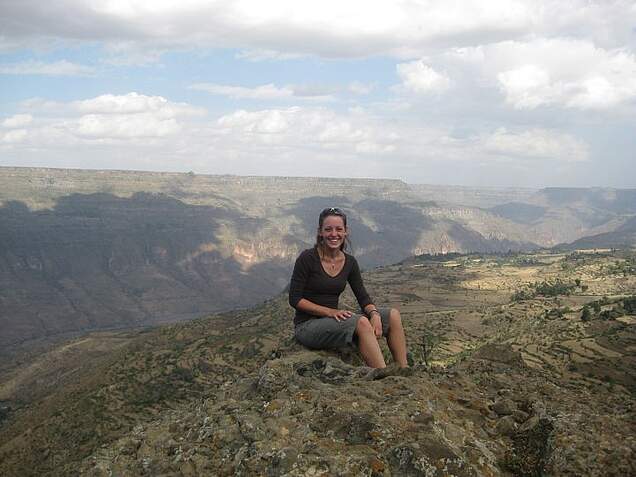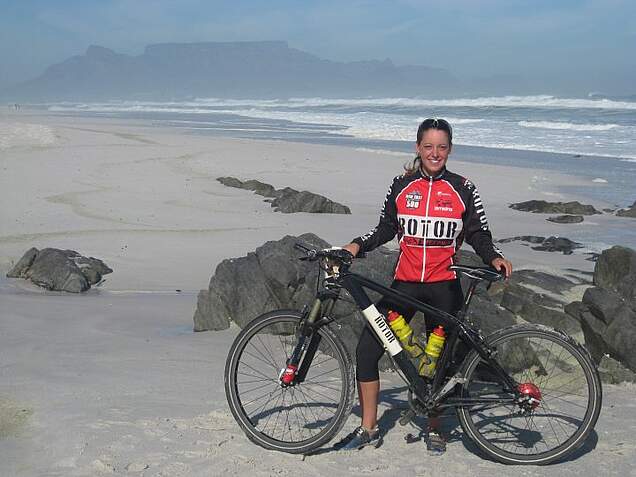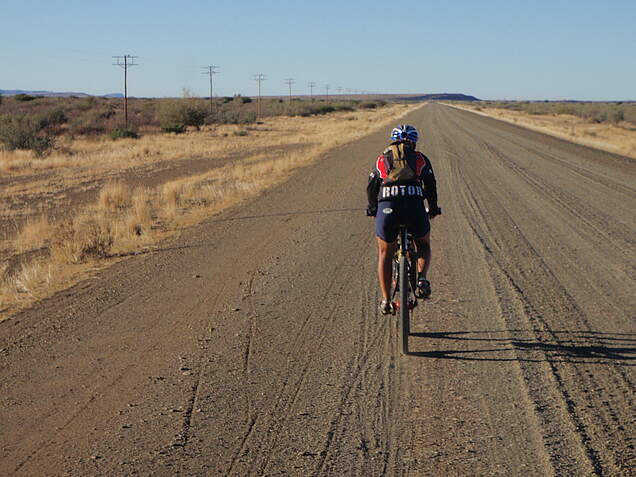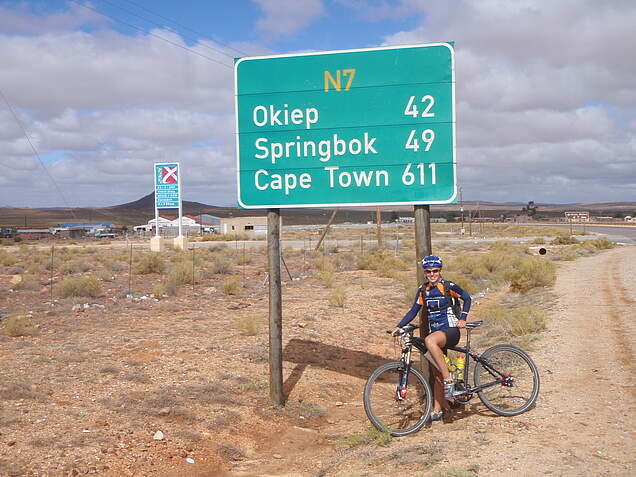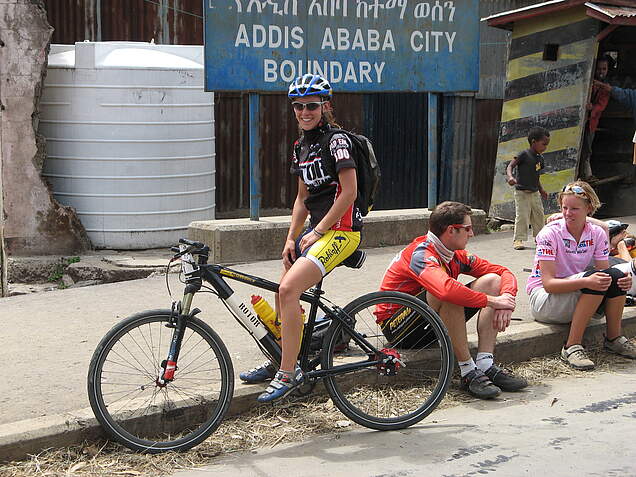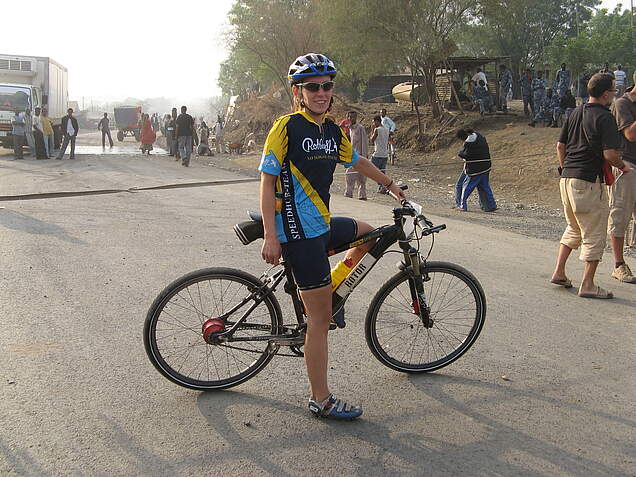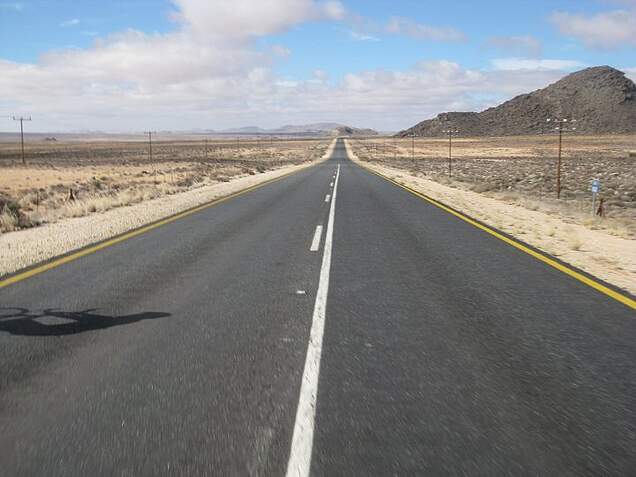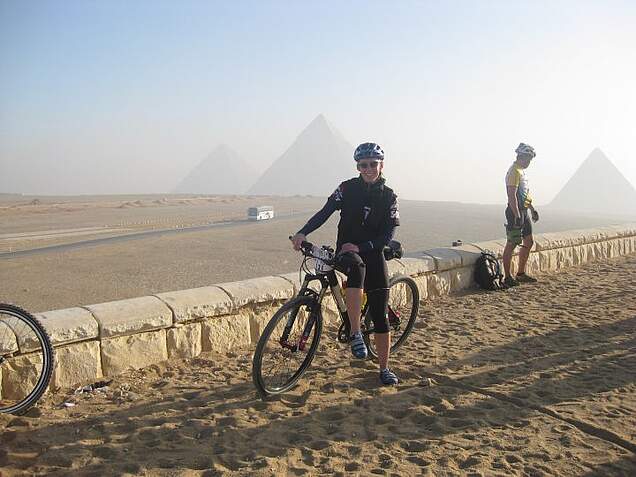'Tour d`Afrique 2010 – from Cairo to Cape Town'our d' Afrique
Tour d´Afrique – the longest mountain bike race/expedition through Africa! 120 days of racing across the entire length of the continent; starting in the north and ending in the southern city of Cape Town. 95 days of cycling, 10 different countries and approximately 12,000 kilometers to cover – a challenge for both man and machine. Those were the published facts that faced this year's 60 participants - riders and adventure seekers from around the globe - who had all come together on in this magnificent continent to take part in the four month adventure... and I was one of them, stupid or crazy enough to take on the challenge as a race!
11,844 kilometers through Africa. This was not going to just be a test of my stamina and condition, but also of my bicycle component choice – I knew this from the very start. I wrote to many well-known companies in the hope of receiving some sort of support in the form of components. I was surprised at the number of responses that I received. After just a few hours, 'Rotor Bikes – Generator Radsport' offered me a special bike, tailored to fit both my physical form as well as the African terrain that I would be up against. One condition only – the bike has to be equipped with a Rohloff SPEEDHUB. I have to be honest: up until this point I had never even heard of a SPEEDHUB. After some positive words from friends as well as the loan of a custom-fitted bicycle for the challenge, I accepted the offer, not knowing what lay ahead of me.
I received my hardtail, Rohloff mountain-bike about 10 days before my flight to Cairo. Due to the tight schedule and the bad weather in Munich this year (2009/10), I was only able to experience my new bicycle for the first time in Cairo. My initial impression of the bicycle was mostly good, which increased my general, positive feeling about the whole trip! Saying that, after the many years of using a traditional derailleur system, I definitely needed to reorientate myself toward the 14-speed Rohloff gear hub. However, the transmission makes cycling light and easy, even for the most inexperienced rider, and I quickly got accustomed to the Rohloff system.
The long journey began on the 16th of January 2010. The race was to take us through a total of 10 countries: Egypt, Sudan, Ethiopia, Kenya, Tanzania, Malawi, Zambia, Botswana, Namibia and South Africa. Every country had its own very distinct character and each had its own personal surprises in store for us. Africa seemed to possess every imaginable profile, from extremely flat terrain to ascents of almost 3500m in altitude. Even the road surfaces had something to offer every preference. Almost 70% of the roads we cycled on were tarmac – although, varying in levels of quality. The construction of the mountainous roads differed extremely: some were merely gravel paths (partly covered with sharp lava stones, which made riding almost impossible!) and others were simply dirt tracks, which (thanks to the extreme rainfall) were scattered with sticky/clay-like holes, sometimes up to half a meter deep! There were also many sandy paths that also needed to be negotiated. With a Rohloff SPEEDHUB, I definitely had a clear advantage over the competition. While the other competitors continually experienced problems with the terrain – sometimes getting caught for up to 2 hours extracting the clay based dirt from their transmission with their bare hands – I just sailed on past them. It wasn't by any means easy, but I certainly didn't experience any problems with my transmission and so was able to leap over these hurdles.
The mountainous stages proved themselves tricky even on the driest of days. Sand and dirt were omnipresent and seemed to find their way into the smallest of spaces, but my whole bicycle (especially the SPEEDHUB) remained steadfast and simply kept going! I required a total of 3 chains, a brake cable and a new bottom bracket throughout the tour - that was all; no other spares were used for the entire length of the 12,000 km african kilometers, which is absolutely phenomenal by any standard. The majority of riders were required to replace their entire transmission at least once during the race – but not me!
I will never forget the memory from one particular day:
We all steered off onto a freshly tarred street and promptly got ourselves and our bikes covered in the sticky mess. The only way that we were able to remove all the tar from our bikes was with neat petrol. Thankfully, I had a Rohloff SPEEDHUB so my entire shifting system was neatly packed away within the hub and consequently not affected by the mess. That night's sleep turned out to be incredibly short for many of the participants!
It turned out to be very beneficial for me that I was equipped with a Rohloff SPEEDHUB. On the few days of rest that we were allowed, I saw that all the other riders were having to spend hours of their time cleaning their bicycles. I, on the other hand, was looked at enviously after I'd finished within a few minutes and then went off to spend my time doing “more important things.” There was only one occasion on which I had to devote a little more time to caring for my bike: an oil-change, about halfway through the tour. I have to confess that I was surprised there was hardly any oil left in the hub! I remembered that during the first few weeks of the race I had lost a small amount of oil almost daily – probably due to the air transportation into Africa – but I certainly hadn't lost any sleep over it. During the oil-change I suddenly realized that I had done about 6000 km of the race with almost no oil in the gear-unit. Even so, the Rohloff SPEEDHUB had continued to function the whole time without one single hiccup!
After crossing the finish line on the 15th of May 2010, the SPEEDHUB then faced its final stage of the Tour d'Afrique – the flight from Johannesburg in South Africa, back home to Munich, Germany. I had to pack my bike into a very small package and I didn't have much material to protect it during the flight. Upon its arrival in Munich I saw the result: a hole in the box, approximately 15cm in diameter in the exact position where my rear wheel was. The wheel had been literally forced out, through the container. A typical derailleur transmission would not have survived the damage, however, I reassembled my bicycle when I arrived back home, straddled it and was able to set off immediately. The Rohloff gear hub, along with the rest of my Rotor Bicycle, had mastered the race as well as the damage from the flights and was still working perfectly!
After all the positive experiences I have had with the Rohloff SPEEDHUB on the Tour d'Afrique, I would like to explain two points that spring to mind, which I feel the need to get used to. The first is the compacted weight of the rear wheel. This was a fact that really did take a while for me to get used to. I noticed immediately that the hub needed to be ridden differently from other systems. I was able to feel a definite contrast in the way my bike felt in the first few days with the SPEEDHUB, especially when cycling at a high cadence or when ascending for longer periods. Fortunately, this did not impair my performance throughout this particular race and later, during the mountainous stages, I even began to feel a slight benefit from the concentrated weight. The second point is that it seemed necessary to constantly re-tension the chain. Due to the drastically reduced maintenance on my bike, I simply overlooked this at the start of the race, which led to problems with the chain springing off the chainrings when traversing potholed terrain. After a few weeks, I became aware of the cause and remembered to check and re-tension the chain regularly. Problem solved!
Receiving the sponsorship from both Rotor and Rohloff for the Tour d`Afrique was definitely the best decision for me. Thanks to the component choice, I had no technical issues to cause me discomfort during the race, which proved to be my advantage over most of the other participants.
I wish to take this opportunity to thank both companies for their much appreciated support. Without their support, the race would have been much harder and more stressful and it would have definitely taken a longer time. I am sure that without their help, I would have been able to claim neither my first place in the women's class nor the second place in the mixed/overall class.
Thank-you!
Yours,
Gisela Gartmair
